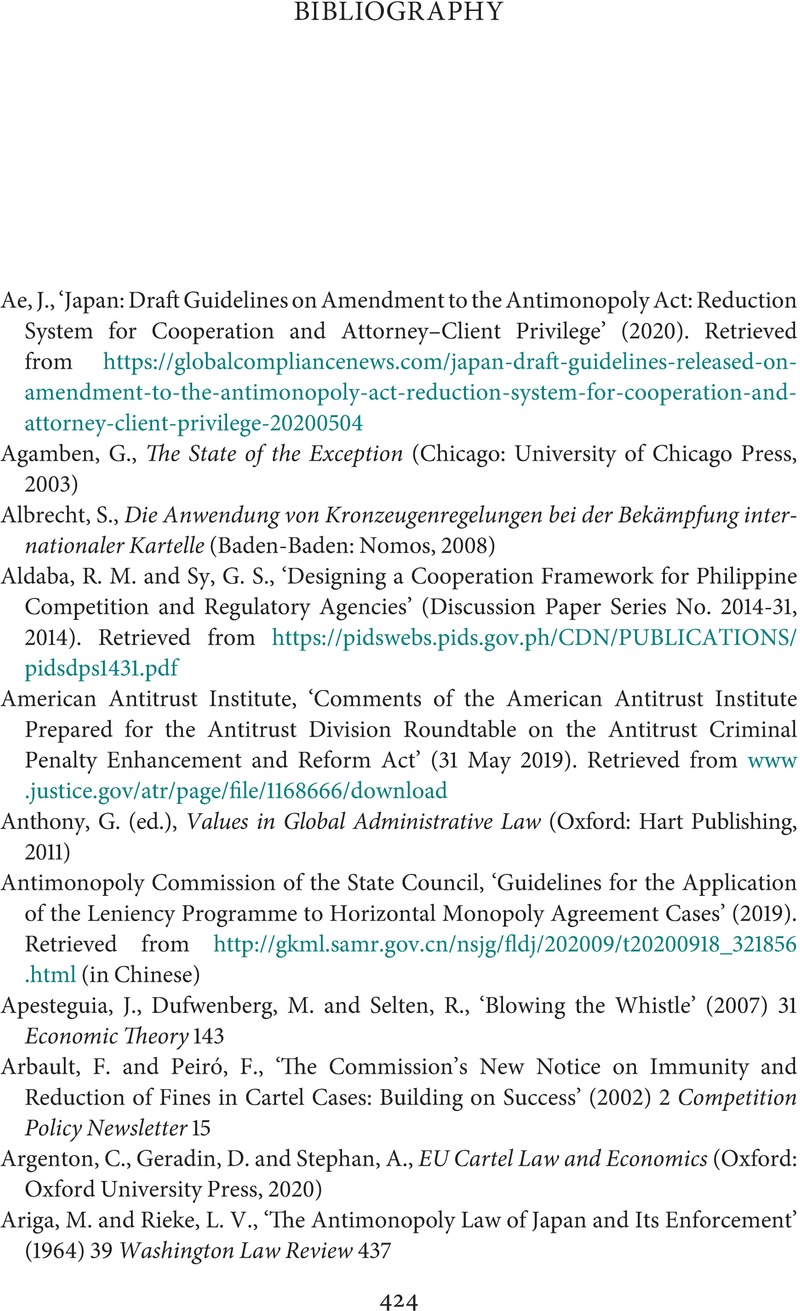Book contents
- Leniency in Asian Competition Law
- Leniency in Asian Competition Law
- Copyright page
- Contents
- Tables and Boxes
- Contributors
- Preface and Acknowledgements
- Abbreviations
- Part I Introduction
- Part II Leniency in Historical, International and Theoretical Context
- Part III Leniency Programmes in Selected Asian Jurisdictions
- Part IV Concluding Remarks
- Appendix Schematic Overview of the Leniency Programmes from Korea, Japan, Singapore, China, India, Taiwan, Malaysia, Hong Kong and the Philippines
- Bibliography
- Index
- References
Bibliography
Published online by Cambridge University Press: 15 September 2022
- Leniency in Asian Competition Law
- Leniency in Asian Competition Law
- Copyright page
- Contents
- Tables and Boxes
- Contributors
- Preface and Acknowledgements
- Abbreviations
- Part I Introduction
- Part II Leniency in Historical, International and Theoretical Context
- Part III Leniency Programmes in Selected Asian Jurisdictions
- Part IV Concluding Remarks
- Appendix Schematic Overview of the Leniency Programmes from Korea, Japan, Singapore, China, India, Taiwan, Malaysia, Hong Kong and the Philippines
- Bibliography
- Index
- References
Summary

- Type
- Chapter
- Information
- Leniency in Asian Competition Law , pp. 424 - 458Publisher: Cambridge University PressPrint publication year: 2022

